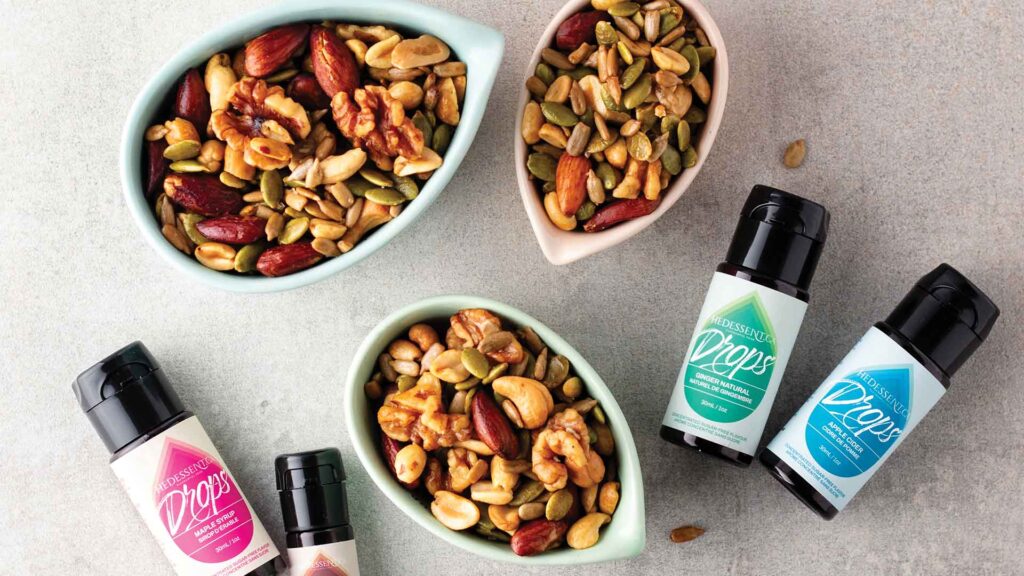We currently ship anywhere in Canada and the United States.
Shipping Inquiries
We do our best to get your order out as quickly as possible. Shipping times may vary depending on your location, time of year, and chosen method of shipping. Our estimated time of arrival is approximately 5 -12 business days. Once your order is shipped, you will receive a tracking number, so you can easily monitor delivery.
Unfortunately, no. Due to the consumable nature of this product, we are not able to accept returns. However, your experience is important to us. For more information please see our our shipping and returns policy or contact support@hedessent.ca with any issues, and a member of our team will follow up with you.
If you think your package may have been lost in transit, please send your order number or the tracking number you received to orders@hedessent.ca within one (1) week after the estimated delivery date, and a member of our team will assist you.
We are located in Ontario, Canada, and all of our small-batch flavours are manufactured on-site in an HACCP/GMP/ISO 9001:2015 certified facility free of allergenic materials.
About our Product
Our products do not contain proteins, fats, or carbohydrates in quantities that would provide any caloric or nutritional value in a standard serving and are exempt from the Nutrition Facts Table and Labeling Requirements. Click here for more information about our ingredients.
All of our flavours are manufactured using FEMA GRAS synthetic flavour materials and/or food grade essential oils. Our flavours may contain pharmaceutical grade propylene glycol, water, sunflower oil, vegetable oil, or triacetin. Ingredients vary per flavour, depending on whether they are oil or water soluble. Our products do not contain:
- any ingredients of animal origin
- Ethanol
- high intensity sweeteners or bulk sweeteners
- monosodium glutamate (MSG)
- Genetically modified organisms (GMOs).
And are free of the following common allergenic compounds:
- Crustaceans and molluscs
- Eggs
- Fish
- Gluten
- Milk
- Mustard
- Peanuts
- Sesame
- Soy
- Sulphites
- Tree Nuts
- Wheat and Triticale
Opened flavours don’t require refrigeration – just store your bottles on your spice rack for easy access when you need it.
Our bottles come with built-in droppers for easy measuring. A 10 mL bottle provides 300+ drops of concentrated flavour, while a 30 mL bottle gives you 950+ drops to play with. Just a few drops add big flavour, so one bottle can take you a long way.
Cooking with Flavour
The easier question is, “What isn’t it good for?” Our flavourings can be added to food or drinks for a quick infusion of flavour. Add to cocktails, hot beverages, soups, sauces, vegetable dishes, desserts… the list is endless! The only limitation is your imagination.
Absolutely! Whether you love to cook or not, using our flavours is easy! All it takes is a few simple drops in any dish or drink, and you’re good to go. If you are someone who enjoys making more elaborate dishes, our product will open up a world of flavour possibilities at a fraction of the cost, especially for some of those harder-to-find ingredients – did someone say Black Truffle?
For best results, add our flavours to your recipe by mixing a few drops into your wet ingredients. For sweet dishes, whipped cream or condensed milk is a great base to start experimenting with flavour. For savory dishes, try butters and oils. We recommend 5 drops per 100g of food to start as a baseline. Taste and then sweeten or season, adjusting as desired. Flavour your beverages by simply adding a few drops right into your coffee, tea, soda, or cocktail. Looking for some Quick Tips? Click Here
We get it. Working with such a wide array of food flavours may be new to you, and it can take some time to learn. But here are some fast and simple ways you can get started using our products.
FLAVOUR SAVERS
Frozen foods often lose some of their flavour during the freezing process. Add our flavours to brighten leftovers, frozen dishes, and anything that needs a quick pick-me-up!
FLAVOUR BOOSTERS:
Add a few drops to any food or drink for a quick boost of flavour! Need some coconut in your coffee? Some parmesan in your potatoes? Tomatoes in your tacos? Add a few drops, and keep it flavourful without all the prep!
FLAVOUR YOUR WAY
Have some picky eaters in your house? Hedessent to the rescue! Everyone has their own unique tastes and favourite flavours. Give them what they want by flavouring individual servings differently to satisfy any palate!
Want more recipe inspo? Check out our recipe section or subscribe to The Art of Flavour on Youtube, where we share new recipes each week, or join our mailing list to receive Featured Recipes right in your inbox for easy access!
Understanding Flavour
Acids taste sour because they release hydrogen ions, or H+, when mixed with liquid. Those ions interact with your taste cells in a few ways. They can slip directly into the cell, block potassium channels, or open other channels that let more positive ions flow in. All of this activity changes the cell’s charge and sends a signal to your brain that says, “this tastes sour.”
That quick reaction is why we pucker up when we taste lemon, vinegar, or anything with a sharp tang. It is your body’s way of recognizing acidity and responding to it in real time.



